This article was medically reviewed by Allison Romero, PT, DPT. Dr. Allison Romero is a Pelvic Health Specialist, Physical Therapist, and the Owner of Reclaim Pelvic Therapy in the San Francisco Bay Area. With over a decade of experience, Allison specializes in comprehensive pelvic physical therapy treatments for pelvic floor dysfunction. She holds a Bachelor of Science in Kinesiology and Exercise Science from Sonoma State University and a Doctor of Physical Therapy from the University of Southern California. Allison is a board certified Physical Therapist in California and is a member of the American Physical Therapy Association-Section on Women’s Health and the International Pelvic Pain Society.
There are 10 references cited in this article, which can be found at the bottom of the page.
wikiHow marks an article as reader-approved once it receives enough positive feedback. This article received 27 testimonials and 92% of readers who voted found it helpful, earning it our reader-approved status.
This article has been viewed 4,233,342 times.
Kegel exercises can improve your sex life and help with pelvic floor problems, including urinary and fecal incontinence. The key is to get in the habit of doing them every day so you start to see results.
Steps
Preparing to Do Kegel Exercises
-
1Find your pelvic muscles by stopping the flow of your urine mid-stream. Before you do your Kegel exercises, it's important to find your pelvic muscles. These are the muscles that form the floor of your pelvic floor. The most common way to find them is to try to stop the flow of your urine midstream. This tightening is the basic move of a Kegel.[1] Let those muscles go and resume the flow of urine and you'll have a better sense of where those Kegels are.[2] Just remember to see a doctor before you begin your Kegel exercises if you have any medical problems that may prevent you from doing Kegels safely.
Note: Don't stop urinating midstream as your regular Kegel exercise routine. Doing Kegels while urinating more than twice a month can actually have the opposite effect, weakening the muscle. It may also cause damage to your bladder and kidneys.[3]
-
2If you still have trouble finding your Kegels, place your finger in your vagina and squeeze your muscles. You should feel the muscles tightening and your pelvic floor move up. Relax and you'll feel the pelvic floor move back again. Make sure your finger is clean before you insert it into your vagina.[4]
- If you're a sexually active woman, you can also ask your partner if he can feel you "hugging" his penis and letting go during sex.
Advertisement -
3Use a hand mirror to find your Kegels. If you're still having trouble locating or isolating your Kegels, place a hand mirror below your perineum, which is the skin-covered area between your vagina and your anus. Practice squeezing and relaxing what you think are your Kegel muscles. If you do this correctly, you should see your perineum contracting with each squeeze.[5]
-
4Make sure you have an empty bladder before you begin your Kegels. This is important. You don't want to do your Kegels with a full or a partially full bladder, or you may experience pain while you do your Kegels, as well as some leakage. Before you start your exercise routine, do a bladder check so you can perform those exercises as efficiently as possible.[6]
-
5Concentrate on only tightening your pelvic floor muscles. Your Kegel exercises should focus on these muscles only, so you should avoid flexing other muscles, such as your buttocks, thighs, or your abdomen, for best results. To help your concentration and the efficiency of your movements, make sure you breathe in and out as you perform each set of Kegels, instead of holding your breath. This will help you relax and get the most out of your pelvic floor exercises.[7]
- One way to keep your muscles relaxed is to place one hand on your belly to make sure that your belly is relaxed.
- If your back or belly ache a bit after you complete a set of Kegel exercises, then it's an indication that you're not doing them correctly.
-
6Get into a comfortable position. You can do these exercises either sitting in a chair or lying on the floor. Make sure your buttock and tummy muscles are relaxed. If you are lying down, then you should be flat on your back with your arms at your sides and your knees up and together. Keep your head down, too, to avoid straining your neck.[8]
Doing Kegel Exercises
-
1Squeeze your pelvic floor muscles for five seconds. When you're just starting off, this is a great exercise. You don't want to strain those muscles too much by squeezing them for too long. If five is even too long for you, you can begin by squeezing those muscles for just 2-3 seconds.[9]
-
2Release your muscles for ten seconds. Ideally, you should always give those pelvic floor muscles a ten-second break before you repeat the exercise. This gives them enough time to relax and to avoid strain. Count to ten before you begin the next repetition.[10]
-
3Repeat the exercise ten times. This can be considered one set of Kegels. If you started off by squeezing those muscles for five seconds, then squeeze them for five seconds, relax them for ten, and repeat this exercise ten times. This should be enough Kegels for one time and you should do the same set of ten 3-4 times a day, but no more.[11] [12]
-
4Build toward squeezing your pelvic floor muscles for ten seconds at a time. You can increase the amount of seconds that you squeeze those muscles each week. There's no need to do them for any longer, or to do more than one set of them per time. Once you've reached the magic number of ten seconds, stick to it, and continue to do one set of 10 10-second squeezes 3-4 times a day.[13]
-
5Do pull-in Kegels. This is another variation on the Kegel. To perform a pull-in kegel, think of your pelvic floor muscles as a vacuum. Tense your buttocks and pull your legs up and in. Hold this position for 5 seconds and then release it. Do this 10 times in a row. It should take about 50 seconds to complete.
Getting Results
-
1Perform your Kegel exercises at least 3-4 times a day. If you really want them to stick, then you have to make them part of your daily routine. 3-4 times a day should be doable, as each Kegel session won't last very long, and you can find ways of fitting Kegels into your daily routine. You can aim to do them in the morning, afternoon, and evening so begin to do them like clockwork, instead of worrying about scheduling a time to do your Kegels.[14]
-
2Fit Kegels into your busy routine. The best part about doing Kegels is that you can do them without anyone knowing. You can do them while you're sitting at your desk in your office, having lunch with your friends, or just relaxing on the couch after a long day at work. Though lying down and isolating your Kegels and focusing hard is important for beginners, once you get the hang of isolating those muscles, you can do your Kegels almost anywhere at anytime.[15]
- You can even make a habit of doing them during a routine activity, such as checking your mail or email.
- Once you've found a set of Kegel exercises that works for you, you should stick to this routine instead of doing even more Kegels, or doing them more strenuously. If you overdo it, you may suffer from straining when you have to urinate or move your bowels.
- Just remember that, while stopping urination midstream is a great way to locate your Kegels, you should not actually do your Kegels routinely while urinating or you may suffer problems associated with incontinence.
-
3Expect results in a few months if you do Kegels regularly. For some women, the results are dramatic; for others, Kegels prevent further urinary tract problems. Some women get frustrated because they do Kegels for a few weeks and don't feel any difference. Stick with it long enough to feel the changes in your body. According to the National Institutes of Health (NIH), you may be able to feel results as early as after 4-6 weeks.[16]
-
4Ask for help if you don't think you're doing Kegels properly. Your doctor can help you identify and isolate the correct muscles to perform the exercise. If you feel like you've been doing Kegels for a considerable amount of time, such as a few months, and have seen no results, then you should seek help from your doctor. Here's what your doctor can do for you:[17]
- If necessary, your doctor can provide biofeedback training. This involves placing a monitoring device inside your vagina, and electrodes externally. The monitor can tell you how successful you were in contracting your pelvic floor muscles and how long you were able to hold the contraction.[18]
- A doctor can also use electrical stimulation to help you identify the pelvic floor muscles. During this process, a small electrical current adheres to the pelvic floor muscles. When activated, the current automatically contracts the muscle. After some use, you'll most likely be able to reproduce the effect on your own.[19]
-
5Continue doing your Kegels if you want to keep incontinence at bay. If you want to keep those muscles strong and to keep incontinence away, then you have to continue doing your Kegels. If you stop them, even after months of exercise, your incontinence problems will return. You'll have to work to keep those muscles in shape and should be ready for the commitment.[20]
Kegel Exercise Description and Routines
Expert Q&A
Did you know you can get expert answers for this article?
Unlock expert answers by supporting wikiHow
-
QuestionHow do I know if I'm doing Kegel exercises correctly?
 Allison Romero, PT, DPTDr. Allison Romero is a Pelvic Health Specialist, Physical Therapist, and the Owner of Reclaim Pelvic Therapy in the San Francisco Bay Area. With over a decade of experience, Allison specializes in comprehensive pelvic physical therapy treatments for pelvic floor dysfunction. She holds a Bachelor of Science in Kinesiology and Exercise Science from Sonoma State University and a Doctor of Physical Therapy from the University of Southern California. Allison is a board certified Physical Therapist in California and is a member of the American Physical Therapy Association-Section on Women’s Health and the International Pelvic Pain Society.
Allison Romero, PT, DPTDr. Allison Romero is a Pelvic Health Specialist, Physical Therapist, and the Owner of Reclaim Pelvic Therapy in the San Francisco Bay Area. With over a decade of experience, Allison specializes in comprehensive pelvic physical therapy treatments for pelvic floor dysfunction. She holds a Bachelor of Science in Kinesiology and Exercise Science from Sonoma State University and a Doctor of Physical Therapy from the University of Southern California. Allison is a board certified Physical Therapist in California and is a member of the American Physical Therapy Association-Section on Women’s Health and the International Pelvic Pain Society.
Pelvic Health Specialist
-
QuestionWhat is the point of Kegel exercises?
 Allison Romero, PT, DPTDr. Allison Romero is a Pelvic Health Specialist, Physical Therapist, and the Owner of Reclaim Pelvic Therapy in the San Francisco Bay Area. With over a decade of experience, Allison specializes in comprehensive pelvic physical therapy treatments for pelvic floor dysfunction. She holds a Bachelor of Science in Kinesiology and Exercise Science from Sonoma State University and a Doctor of Physical Therapy from the University of Southern California. Allison is a board certified Physical Therapist in California and is a member of the American Physical Therapy Association-Section on Women’s Health and the International Pelvic Pain Society.
Allison Romero, PT, DPTDr. Allison Romero is a Pelvic Health Specialist, Physical Therapist, and the Owner of Reclaim Pelvic Therapy in the San Francisco Bay Area. With over a decade of experience, Allison specializes in comprehensive pelvic physical therapy treatments for pelvic floor dysfunction. She holds a Bachelor of Science in Kinesiology and Exercise Science from Sonoma State University and a Doctor of Physical Therapy from the University of Southern California. Allison is a board certified Physical Therapist in California and is a member of the American Physical Therapy Association-Section on Women’s Health and the International Pelvic Pain Society.
Pelvic Health Specialist
-
QuestionIs it normal to feel sexual arousal after doing Kegel exercises?
 Sarah Gehrke, RN, MSSarah Gehrke is a Registered Nurse and Licensed Massage Therapist in Texas. Sarah has over 10 years of experience teaching and practicing phlebotomy and intravenous (IV) therapy using physical, psychological, and emotional support. She received her Massage Therapist License from the Amarillo Massage Therapy Institute in 2008 and a M.S. in Nursing from the University of Phoenix in 2013.
Sarah Gehrke, RN, MSSarah Gehrke is a Registered Nurse and Licensed Massage Therapist in Texas. Sarah has over 10 years of experience teaching and practicing phlebotomy and intravenous (IV) therapy using physical, psychological, and emotional support. She received her Massage Therapist License from the Amarillo Massage Therapy Institute in 2008 and a M.S. in Nursing from the University of Phoenix in 2013.
Registered Nurse
Warnings
- Always do kegels with an empty bladder. Doing kegels during urination can weaken your pelvic floor and increases your risk of contracting a urinary tract infection.⧼thumbs_response⧽
- Don't do Kegels while urinating, except to locate the muscles initially. Interrupting urine flow can result in kidney and bladder problems.⧼thumbs_response⧽
References
- ↑ Allison Romero, PT, DPT. Pelvic Health Specialist. Expert Interview. 2 December 2020.
- ↑ https://medlineplus.gov/ency/patientinstructions/000141.htm
- ↑ https://medlineplus.gov/ency/patientinstructions/000141.htm
- ↑ https://my.clevelandclinic.org/health/articles/14611-kegel-exercises
- ↑ https://utswmed.org/medblog/prepare-body-labor-delivery/
- ↑ https://www.allinahealth.org/health-conditions-and-treatments/health-library/patient-education/beginnings/diet-and-exercise/kegel-exercise
- ↑ https://www.urologyhealth.org/urology-a-z/p/pelvic-floor-muscles
- ↑ https://www.pennmedicine.org/updates/blogs/womens-health/2015/may/how-to-do-kegel-exercises-correctly
- ↑ https://my.clevelandclinic.org/health/articles/14611-kegel-exercises
- ↑ https://www.allinahealth.org/health-conditions-and-treatments/health-library/patient-education/beginnings/diet-and-exercise/kegel-exercise
- ↑ Allison Romero, PT, DPT. Pelvic Health Specialist. Expert Interview. 2 December 2020.
- ↑ http://www.nlm.nih.gov/medlineplus/ency/patientinstructions/000141.htm
- ↑ https://www.urologyhealth.org/urology-a-z/p/pelvic-floor-muscles
- ↑ https://www.niddk.nih.gov/health-information/urologic-diseases/kegel-exercises
- ↑ https://www.niddk.nih.gov/health-information/urologic-diseases/kegel-exercises
- ↑ https://www.niddk.nih.gov/health-information/urologic-diseases/kegel-exercises
- ↑ https://my.clevelandclinic.org/health/articles/14611-kegel-exercises
- ↑ https://medlineplus.gov/ency/article/003975.htm
- ↑ https://medlineplus.gov/ency/article/003975.htm
- ↑ http://www.nlm.nih.gov/medlineplus/ency/patientinstructions/000141.htm
About This Article
Before you do a Kegel exercise, find your pelvic floor muscles by trying to stop the flow of urine mid-stream. Those are the muscles you want to squeeze during Kegels! To do the exercise, squeeze your pelvic floor (or kegel) muscles for 5 seconds, then rest for 10 seconds. Aim for 10 reps 3-4 times a day. Try doing Kegel exercises while you're talking on the phone or watching TV. To make sure you're doing the exercises correctly, keep reading!



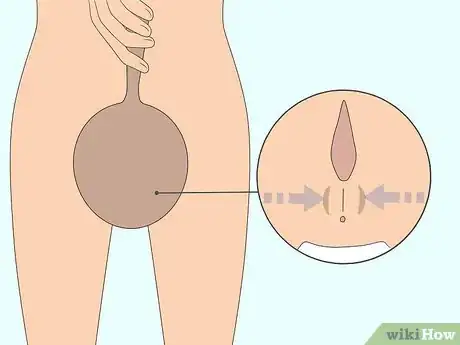


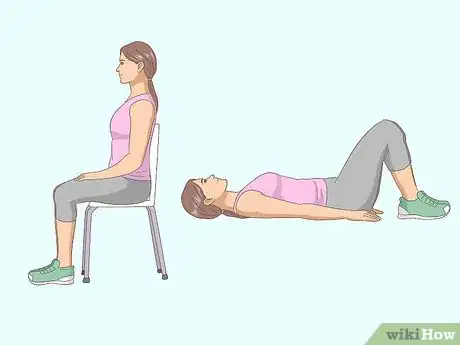

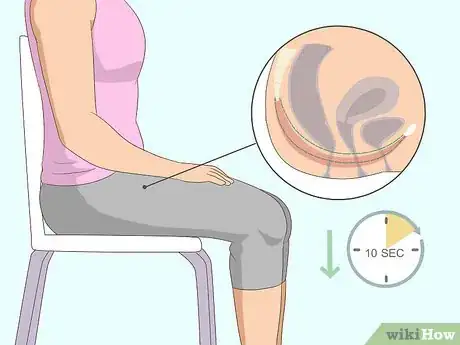
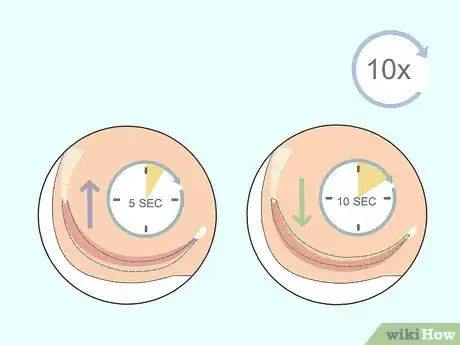
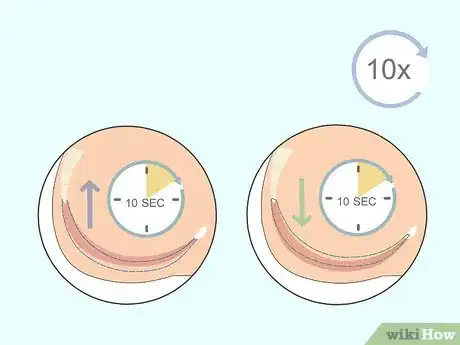




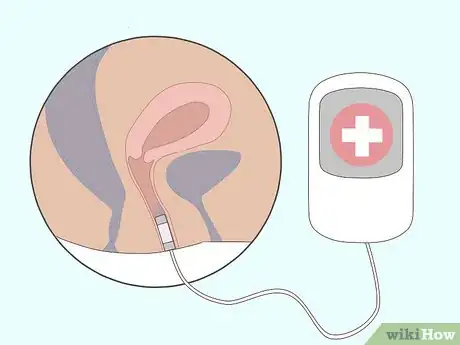

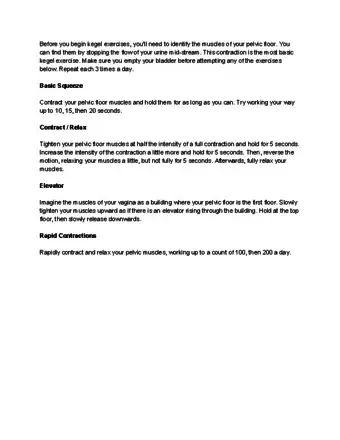

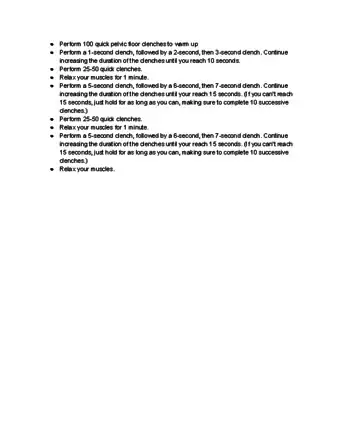

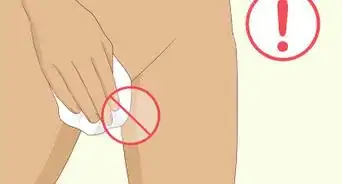



























































Medical Disclaimer
The content of this article is not intended to be a substitute for professional medical advice, examination, diagnosis, or treatment. You should always contact your doctor or other qualified healthcare professional before starting, changing, or stopping any kind of health treatment.
Read More...